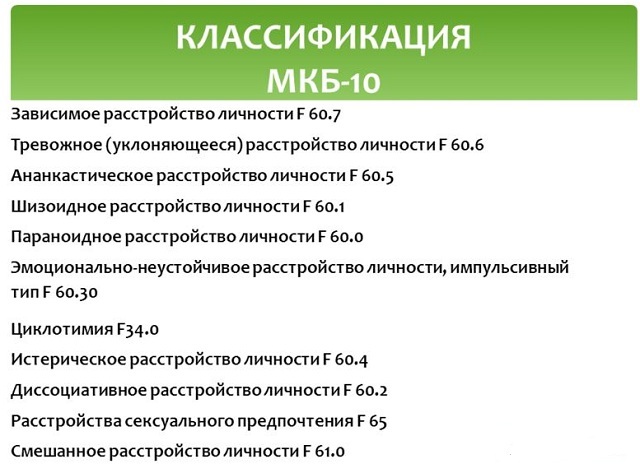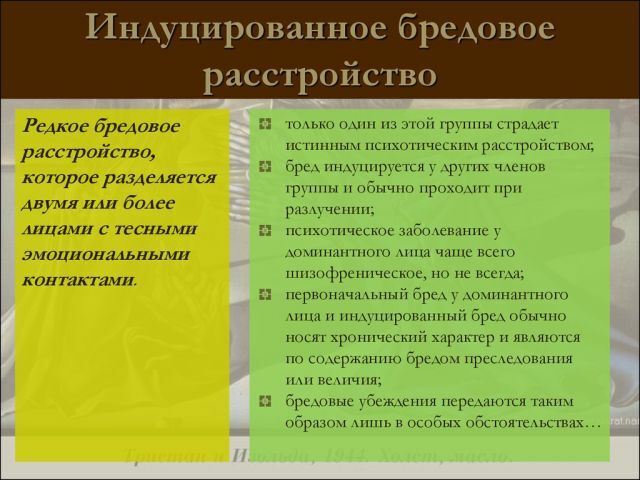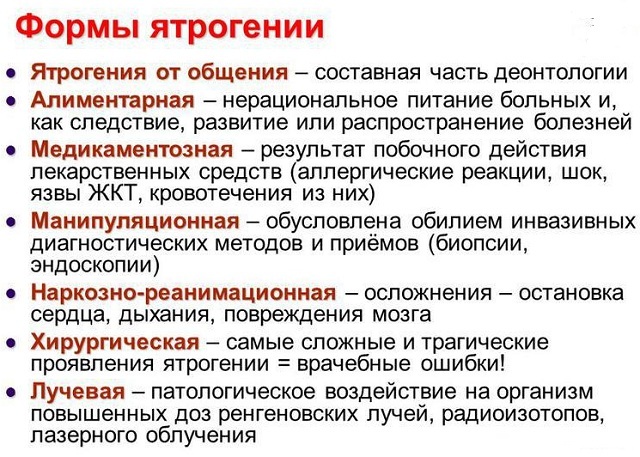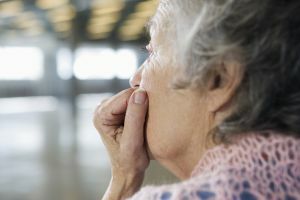
"No sleep, no rest to the exhausted soul"
The term "psychosis" literally translates as the movement of the soul, because it comes from the ancient Greek "psyche" - the soul.
If, in a narrower philosophical context, it is: confusion, excitement, frenzy, that is, any indignation of tranquility by this incomprehensible mind of substance, then in the medical( psychiatric and neurological) it is a deviation from the norms of behavior caused by some pathology of mental activity.
Contents
- Causes in a serious way
- Properties depending on the cause and clinical picture
- Possible variants of the clinical picture
- About the characteristics of child psychotic disorders
- At the first sign of trouble. ..
- Professional help
- Medical therapy
- Preventive measures - can we avoid a disaster?
About the reasons seriously
These deviations may be dictated by causes of both organic and functional nature.
The first category includes diseases that have left a coarse imprint in the structures of the brain in the form of scars, strictures, narrowing of natural openings and canals in the system of blood and lymph circulation of the brain, or changes in the lower subdivisions of the nervous system, down to the spinal cord.

To organic causes of development of psychoses include:
- meningitis;
- encephalitis;
- trauma at various levels of the brain and spinal cord and similar disorders.
Functional reasons include transient conditions caused by changes in:
- vascular tone;
- hormone level;
- intracranial pressure;
- electrolyte balance.
A psychotic malfunction can be triggered by stressful situations in the form of being in an unfamiliar environment or changing the usual conditions of existence( travel, solitary confinement, participation in hostilities).
Due to the redistribution of blood and changes in the speed of movement of other biological fluids due to fluctuations in the level of hormones caused by visual and other impressions, a change in the mode of activity of the nervous system occurs, leading to unusual human behavior-the state of psychosis develops.
After eliminating the provoking effect of negative factors from the second category of causes, psychosis usually stops. With the exception of deeply impressed impressions, the return to which leads to a new episode of a psychotic disorder or to a permanent stay in it. So, a person who survived the conclusion in a concentration camp can no longer live the life of the average inhabitant.
With a single negative effect develops acute psychosis, in the case of constant exposure to negative factors speak of the chronic form of the psychotic state.
Properties, depending on the cause and clinical picture of
Depending on the etiological factor, the following types of psychoses are distinguished:
- organic , caused by the consequences of the transferred organic pathology;
- endogenous , caused by neuroendocrine changes;

- situational , caused by a psycho traumatic situation;
- reactive , which arises as a result of an extremely violent mental trauma;
- intoxicated , provoked by intoxication;
- is a somatogenic , developed due to general physical illness;
- is an abstinence and post-retroviral , which develops in the process of abruptly abandoning chronic alcoholism or after the withdrawal of a reagent that has become habitual for use, a drug.
Depending on what signs and symptoms prevail in the overall clinical picture, psychoses are classified into:
- paranoid , which is characterized by systematized delirium of a certain direction - delusions of persecution, jealousy and the like;
- is a hypochondriac , which has the character of concern about the possibility of getting sick or suspecting of an already existing serious illness;
- maniac with a passionate obsession with any idea;
- depressive , characterized by a state of deep depression;
- manic-depressive psychosis, combining the symptoms of the two previous species, the so-called bipolar disorder;
- combined ( combining features of several variants of pathology).
Peculiarities of the behavior of patients with psychoses are dependent on their cause.
If the basis for the onset of manic, depressive or manic-depressive psychosis is personality characteristics,  is conditioned both by innate personal qualities and upbringing, then the changes of the hormonal and humoral background are paramount for the onset of postpartum malfunction in the psyche.
is conditioned both by innate personal qualities and upbringing, then the changes of the hormonal and humoral background are paramount for the onset of postpartum malfunction in the psyche.
The risk group includes persons easily impressed, with too moving a psyche, inclined to perceive the events in an exaggeratedly distorted light. These characteristics may be due to gender( women), age( old people and children), physical infirmity( disabled) and other factors.
That is, they are people who are helpless in the material and everyday life, looking for support in the social environment and coming to confusion and frenzy, when they do not find it.
It is for this reason that senile senile psychosis is most often diagnosed, as well as mental disorders in children, women and weak personalities.
Possible variants of the clinical picture of
Symptoms common to all psychoses are the patient's stay in a state of altered consciousness, accompanied by manifestations of delusional disorders and hallucinations.
A characteristic feature is the inadequacy of behavior, which is accompanied by inadequate statements and expressions of emotions, in view of the loss of the reality of perception of the surrounding reality when the patient is in a situation that most people perceive as not inspiring fears.
There are an infinite number of manifestations of mental disorders, and the same clinical form can be caused by a variety of etiological factors.
So, involuntary psychosis can provoke chronic brain hypoxia due to: 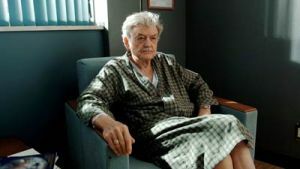
- involution of hormone-significant structures;
- chronic alcohol intoxication;
- regular use of certain groups of medications;
- monotonous diet;
- insufficiency of stay in the open air with the limitation of the volume of active movements.
Manifestations of it may have the character of both manic and depressive syndrome.
In the manic version of the behavior is restless indefatigability, causing a puzzled surprise in the home environment.
So, the grandfather of 72 years suddenly decides to go the whole family from Moscow to Lake Baikal, despite the winter, the employment of young family members by the service and other obstacles travel. He unexpectedly removes all savings from his account and begins active preparation, then buying materials for the creation of a balloon, then without any connection with the previous one, he begins to convince the family of the need for an urgent purchase of a snowmobile. Finally, finding no support for his idea, the completely annoyed "misunderstood genius" with an unspeakable resentment in his voice screams that he will go on a journey alone, on foot and right now! And. .. tired of the many-day feverish activity, the pioneer pensioner is forgotten by sleep.
A few hours later, hardly calmed down, family members are reported to the service that their patriarch was found on the nearest pond, where he tried to cut out a frozen boat from the ice.
In the second, depressive "series" of senile( senile) psychosis, the same person shows a diametrically opposite behavior to the family environment:
Many hours in full immobility, sitting at the window in the same pose, with an empty look, lack of response to treatment, complete disregard for the food offered and demonstrative silence, followed by episodes of some animation with fragmentary replies-objections to the invisible interlocutor. Then follows the listening to the monologue in the head and the next phrase, uttered in a low voice. At the same time, the appeals of the home are either not perceived, or are stubbornly ignored.
After many hours of trying with the whole family of the old stubborn manages to finally talk, to hear back bitter complaints and accusations that they were the cause of his incurable disease, which the doctors are silent on.
Either this statement of a firm belief that it was the marriage with the current spouse that prevented the patient from becoming a scientist of world renown( although the actual education of a psychotic is limited to a secondary school).
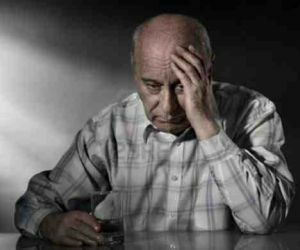 With such a regular-cyclic sequential phase change, psychiatrists talk about manic depressive psychosis.
With such a regular-cyclic sequential phase change, psychiatrists talk about manic depressive psychosis.
All other psychotic manifestations in different groups of psychoses fit into approximately the same set of symptoms and symptoms, differing in individuals from varying degrees of change in the level of consciousness, intensity of delusions and hallucinations, due to the prevailing effect of one etiological factor.
Inside view:
About the peculiarities of children's psychotic disorders
Psychoses in children develop due to two fundamental factors:
- level of development of the nervous system that has not yet completely formed;
- extreme uncertainty about the necessity of its existence as a person.
With apparent external leniency towards children, the child is in the absolute power of an adult society, not having the 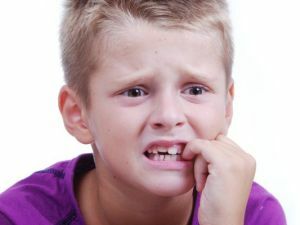 the possibility of self-expression even in small things. Even the place for the game and the toy itself, not to mention the circle of friends, is chosen not by him, but by the analytical adult mind.
the possibility of self-expression even in small things. Even the place for the game and the toy itself, not to mention the circle of friends, is chosen not by him, but by the analytical adult mind.
And the moment comes when the spring of the child's psyche compressed by the hourly pressure does not just descend, but literally turns into a tornado spinning in the opposite direction.
Childhood psychosis for its occurrence does not choose the place and time, it is subconsciously timed to the most visited and spectacular places: supermarkets, crowded streets, institutions.
Measures in the manifestations of feelings also do not. And it can not be, because it is an explosion, a flurry of emotions against the background of a not critically narrowed and distorted consciousness. Howling, screaming, crying, hail of tears, erupted by the eyes of a wriggling and pounding head on the floor of the body attract the curiosity of others.
And, in order to avoid "shame", the mother has to use a variety of methods to reach the child's darkened consciousness - from kneeling before heavy slaps( and the latter work more reliably, although sensitivity to pain can also be reduced).
But most often everything ends for a small ruffian by fiddling and feeding sweets - and the last, closing link of the subconscious reflex mechanism takes over: to attract attention, do so.
Psychotic disorders in adolescence have an even greater destructive power, which can result not only in running away from home, but also in suicide, in committing crimes, grave and senselessly cruel, precisely because of the inadequacy of the assessment of the actions being committed.
In fact, all adolescence, with its acts of protest and disobedience to laws, should be considered a protracted teenage psychosis, which is not always manifested in a manifest, explosive form.
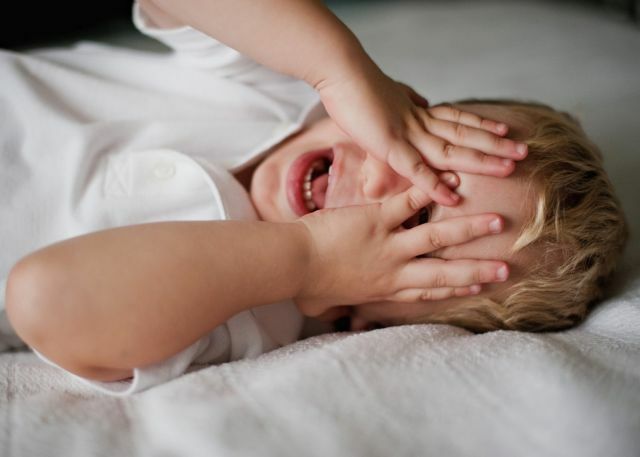
Hormonal emissions combined with a herd feeling often lead to the fact that adolescents develop a massive psychosis, provoked by loud rhythmic music noises and drugs of different strength.
At the first sign of trouble. ..
First of all, due to the unusual and inadequate movements and speech of the patient it is necessary to understand that this is not an ordinary scandal, but a psychotic behavior that can end any way, including suicide.
It should be clearly understood that an appeal to the mind of the patient will not bring any result - he perceives what is happening only a narrow edge of consciousness. The task of the caregiver is to resist the emotional storm, and not to try to outshout her.
And therefore, one should not lose self-control and not allow yourself to get involved in the process.
Discharging the situation is possible only with an exceptionally soft and sympathetic attitude towards the patient, but at the same time demonstrating the unshakable firmness of his own psyche  .Fear, doubt in their own abilities when trying to talk, distract the patient can further exacerbate the situation.
.Fear, doubt in their own abilities when trying to talk, distract the patient can further exacerbate the situation.
In no case should you use insults, ridicule when dealing with a patient, especially - violence. Stay with the patient should be until the end of the crisis.
And the right to initiate a conversation about the treatment should be given to a psychiatrist, gently telling the psychiatrist about the changes that occurred with him and recommending to see the doctor, without stressing the specialization of the latter.
The extreme measure is to call the emergency mental health service, which is necessary in case of an aggravation of the situation.
Professional Assistance
Due to the wide variety of forms of psychosis and their combinations, the treatment of pathology must be strictly differentiated - depending on the etiology of the condition and the multiplicity of its repetitions.
In the case when the mental disorder developed only once and was stopped alone, only medical supervision is required.
The variant with the regular onset of psychotic episodes needs scrupulous diagnosis with the exception of schizophrenia and a similar severe pathology. And only cases confirmed by special studies are taken into operation by a psychiatrist.
There are both general approaches to the treatment of all general psychotic abnormalities, and the features of treatment used in various forms of the disease.
The general directions of treatment are:
- without medicament;
- with the use of medicines.
The first category includes the methods of psychological impact on the patient, used in the inter-attack period and allowing the patient:
- to eliminate the causes initiating the condition;
- make episodes more rare or avoid their recurrence, mitigate the symptoms;
- maximize awareness during the development of the episode;
- to increase self-esteem as a member of the family and society.
Psychotherapy includes methods:
- group therapy , conducted in a circle of patients, also headed by a patient who successfully completed the course of treatment,
 healed and able to help himself;
healed and able to help himself; - psychoeducation - educational work in the family of the patient with an explanation of the essence of the disease and the possibility of healing under the necessary conditions;
- dependence therapy , concerning the development of psychotic deviations on the basis of addiction and alcoholism;
- cognitive therapy , revealing and eliminating cognition - misleading thought forms;
- psychoanalysis - parsing the causes of their emotions and mechanisms of protection from painful situations on the model of their inner world;
- family therapy - classes with a group of psychotic family members;
- ergotherapy - original master classes in learning crafts and new useful skills;
- art therapy - a method of expressing one's feelings by means of visual arts followed by psychoanalysis of the depicted;
- training of social competence - mastering new styles of behavior with the subsequent embodiment of them in everyday life;
- metacognitive training - correction of judgment errors in the classroom.
Treatment of acute or exacerbation of chronic psychosis can not be carried out only by means of psychotherapy - it requires medical treatment.
Including, stationary, because of the obvious:
- danger patient for their own lives or the lives of others;
- helplessness in providing your vital needs;
- possible harm when left without the assistance of a psychiatrist.
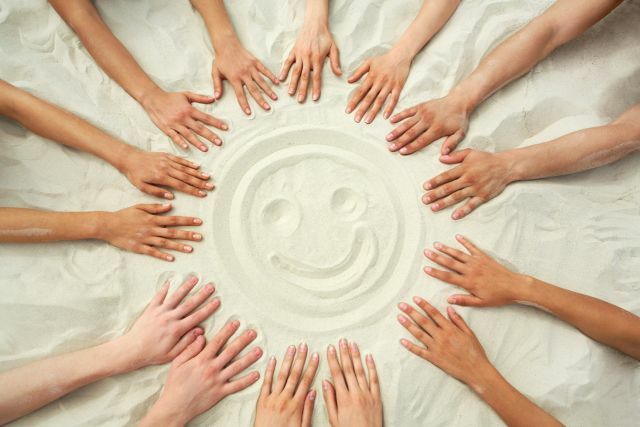
Drug therapy
There is no single regimen for drug treatment, so when prescribing therapy, the actual symptomatology of either predominantly manic or predominantly depressive manifestations of the disease is taken into account, as well as the features of its course depending on the age and sex of the patient( for children doses substantially less than adults).
The decision to reduce or increase the dose, change the treatment schedule is also taken during the observation of the patient, taking into account the possibility of side effects from taking medications.
For the treatment of the phase of the disorder with predominantly manic symptoms, the following drugs are used: 
- antipsychotic action( antipsychotics) - Solian, Zeldox, Fluanxol and others;
- benzodiazepines of class of Oksazepam, Zopiclone;
- of the normodymics of the Actinerval group, Contemnola;
- holinoblokatorov category Cyclodol, Parkopan.
If neuroleptics cause a blockade of dopamine-sensitive receptors, which reduces the intensity of hallucinations and delusions in the face of thinking disorder, then benzodiazepine drugs help to reduce the excitability of neurons, cause sedative, anticonvulsant-relaxing, eliminating insomnia and reducing anxiety.
Normotimics contribute to mood stabilization and provide control of emotions, and also hinder the development of the manic phase( phases), while holinoblockers, blocking the effect of acetylcholine in the parasympathetic nervous system and regulating the degree of sensitivity of neurons in the brain, serve the purpose of reducing side effects of neuroleptics.
Treatment of the depressive phase of the disease includes the administration of drugs:
- antipsychotic action ( Eglonil, Quentiax, Rispolept, Risperidone);
- benzodiazepines ( lorazepam, phenazepam);
- normotimikov ( lithium preparations);
- antidepressants ( Paroxetine, Sertraline);
- holinoblokatorov ( Akineton).
Antipsychotics contribute to the clarity of the thinking process, neutralize hallucinatory-delusional manifestations, reducing the susceptibility of brain neurons to excess dopamine, and benzodiazepine drugs lowering the threshold of excitability of the subcortical structures, reduce the level of 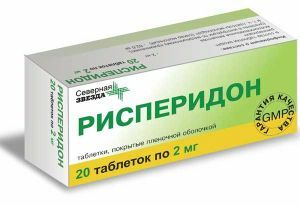 anxiety and depression, reduce fear and relieve muscle tension.
anxiety and depression, reduce fear and relieve muscle tension.
Normotimic drugs contribute to mood stabilization and prevent the development of depression, while a group of antidepressants, preventing the seizure of nerve cells by serotonin, contribute to a rise in mood, reducing feelings of anxiety, fear and longing.
Group holinoblokatorov prevents or significantly reduces not only the manifestations of trembling and stiffness of the muscles, leading to a slowdown of movements, but also prevents frustration of thinking, contributes to the emotional enhancement of sensations.
It is not necessary to worry about the confidentiality of medical advice - there will not be "spots on the biography".
Preventive measures - can disaster be avoided?
The irresponsible and increasingly swollen cult of the mother - toilers and sufferers, the structure of human society is in itself a nutrient soil that produces psychotic disorders, regardless of the age of the victim.
A child, raised by the mother's efforts with only a nominal presence( with actual suspension from education) or the complete absence of the father, will grow up as a flawed person, like a vine, which, in order to rise to the sun, it is necessary to climb, clinging to the support. It is not at all important for the fate of this support, which it is capable of strangling with its embraces or destroying the weight of its growing mass, because it already clings to the next.
The education of a person with the psychology of a parasitic plant, which does not have a firm internal personal core, leads to an increase in the wave of psychosis among the world's population. And here we can not do without measures of a world-wide scale the category of the law on the abolition of slavery.
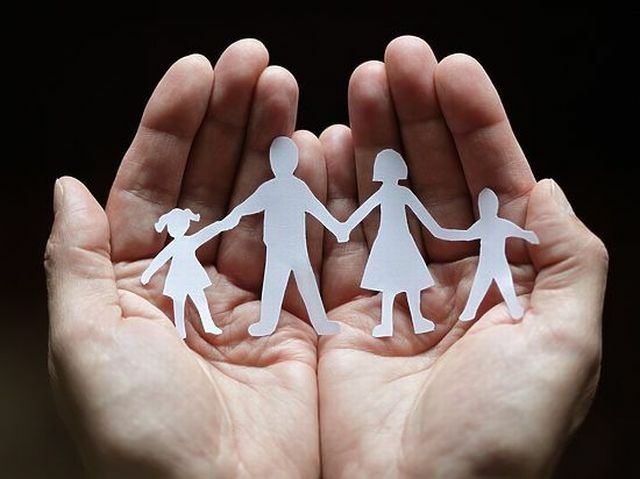
As for our private time and the current place in the sun, prevention of psychoses is promoted by strengthening the moral and psychological climate in the family - an opportunity for the person from the very childhood to feel on an equal footing with members of the family and society, without a veiled infringement of her rights and frank "burning out with a red-hot iron any attempt at free thought. "
All measures taken to increase the level of physical health( from brushing teeth twice a day to healthy and regular sex) also have a beneficial effect on mental health.

